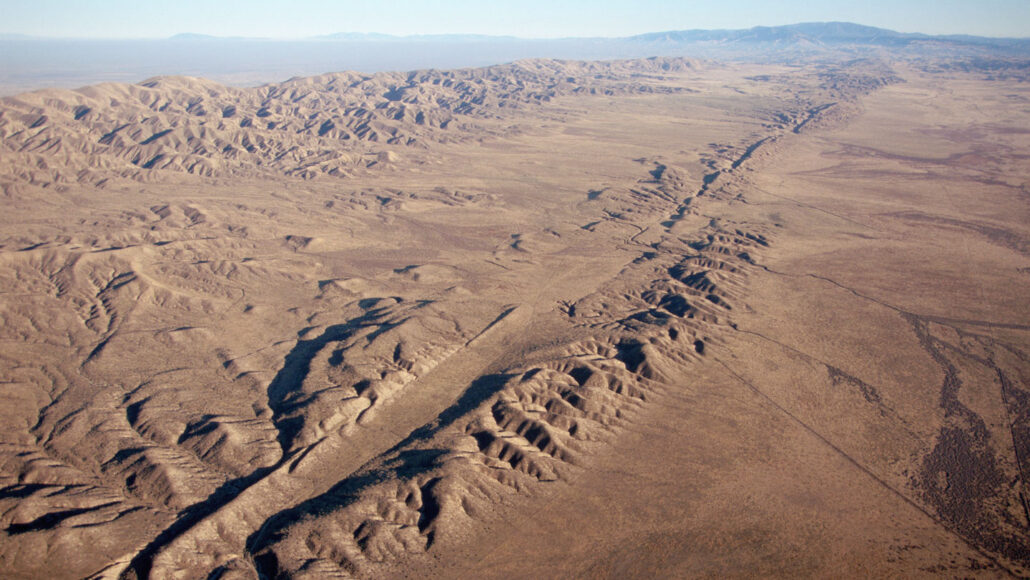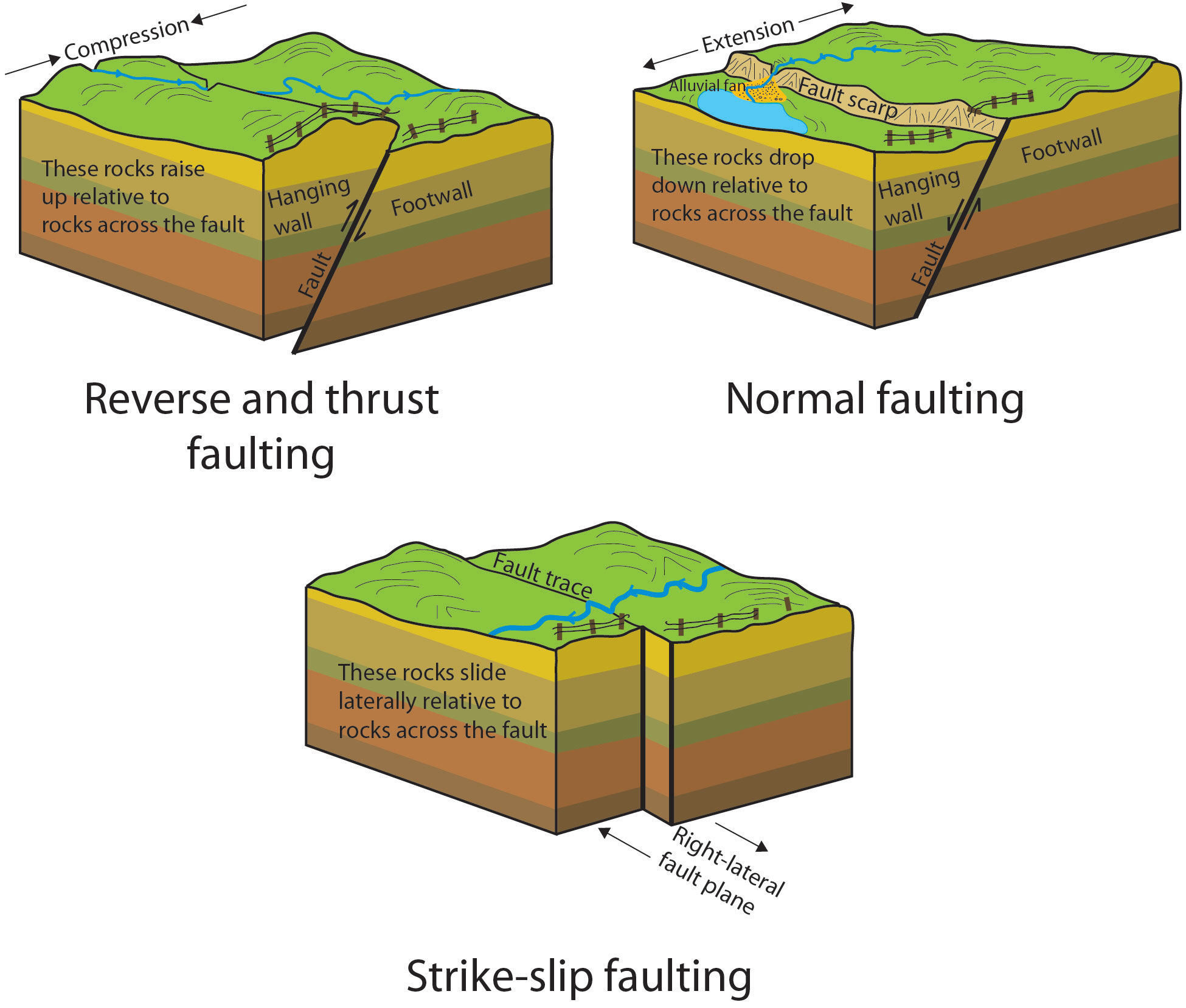crust: (in geology) Earth's outermost surface, usually made from dense, solid rock (in planetary science) the outermost surface of rocky planets, dwarf planets and natural satellites.
earthquake: A sudden and sometimes violent shaking of the ground, sometimes causing great destruction, as a result of movements within Earth’s crust or of volcanic action.
fault: In geology, a fracture along which there is movement of part of Earth’s lithosphere.
fracture: (noun) A break. (verb) To break something and induce cracks or a splitting apart of something.
oblique: An adjective that describes a direction meaning, off at an angle. It is neither parallel nor perpendicular to something, but at a slant from it.
tectonic plates: The gigantic slabs — some spanning thousands of kilometers (or miles) across — that make up Earth’s outer layer.









